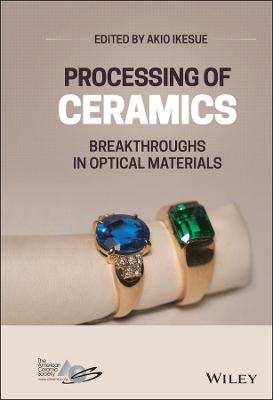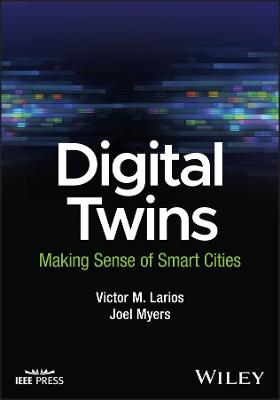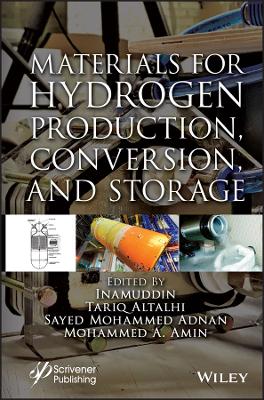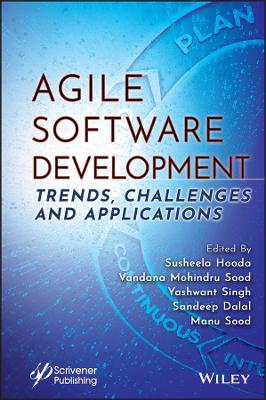Processing of Ceramics
 -15%
portes grátis
-15%
portes grátis
Processing of Ceramics
Breakthroughs in Optical Materials
Ikesue, Akio
John Wiley & Sons Inc
08/2021
432
Dura
Inglês
9781119538707
15 a 20 dias
732
Descrição não disponível.
List of Contributors xi
Preface xiii
1 Introduction 1
Akio Ikesue and Yan Lin Aung
1.1 Introduction 1
1.2 Technical Problem of Conventional Single Crystal 5
1.3 Problem of Conventional Translucent and Transparent Ceramics 9
1.4 Objective of Optical Grade Ceramics 13
1.5 Conclusions 31
References 31
2 Ceramic Laser/Solid-State Laser 33
Akio Ikesue and Yan Lin Aung
2.1 Background 33
2.2 Principle of Laser Generation 34
2.2.1 Spontaneous Emission 34
2.2.2 Stimulated Emission and Laser Generation 36
2.3 LaserCeramics 38
2.3.1 Synthesis of Garnet-Based Materials 38
2.3.2 Laser Oscillation by Monolithic Garnet Ceramics 39
2.3.3 Synthesis and Laser Performance of Sesquioxide Ceramics 44
2.3.4 Other Materials (CaF2, Pseudo Perovskite, ZnSe, ZnS, etc.) 48
2.3.5 Fiber Ceramics as Laser Gain Media 55
2.3.6 Optically Anisotropic Ceramics 56
2.3.7 Laser Oscillation by Composite Laser Elements 65
References 70
3 Scintillators 73
Jiang Li, Xiaopu Chen, and Martin Nikl
3.1 Background 73
3.1.1 Historical Development of Scintillators 74
3.1.2 Application of Scintillators 75
3.2 Physics of Scintillation 78
3.2.1 Characteristics of Scintillation Materials 79
3.3 Inorganic Single Crystal Scintillation Materials 81
3.3.1 Halide Scintillators 81
3.3.2 Oxide Scintillators 84
3.4 Fabrication of Advanced Single Crystal and Ceramics Scintillators 85
3.4.1 Rare-Earth Oxyorthosilicate Scintillators 86
3.4.2 Garnet Scintillators 90
3.4.3 GOS Ceramic Scintillators 96
3.4.4 (Y,Lu,Gd)2O3:Eu Ceramic Scintillators 99
3.5 Optimization of Single Crystal and Ceramic Scintillators 100
3.5.1 Rare-Earth Oxyorthosilicate Scintillators 100
3.5.2 Garnet Scintillators 103
3.5.3 GOS Ceramic Scintillators 117
3.5.4 (Y,Lu,Gd)2O3:Eu Ceramic Scintillators 120
3.6 Residual Problems and Future Trends 122
Acknowledgments 127
References 127
4 Magneto-Optic Transparent Ceramics 143
Akio Ikesue and Yan Lin Aung
4.1 Introduction 143
4.2 Theory of Magneto-Optic Effect 145
4.2.1 Magneto-Optic Effect in Paramagnetic Transparent Ceramics 146
4.2.2 Magneto-Optic Effect in Ferromagnetic Material 148
4.2.3 Measurement of Verdet Constant, Insertion Loss, and Extinction Ratio 149
4.3 Important Parameter for Application 152
4.3.1 Thermal Lens Effect in Faraday Rotator 152
4.3.2 High Power Laser Irradiation 155
4.4 Paramagnetic Magneto-Optic Ceramic Materials 157
4.4.1 TGG Ceramics 157
4.4.2 TAG (Terbium Aluminum Garnet) Ceramics 161
4.4.3 Sesqui-Oxide Ceramics 164
4.4.4 Pyrochlore Ceramics 172
4.5 Ferrimagnetic Magneto-Optic Ceramics 172
4.5.1 Yttrium Iron Garnet 174
4.5.2 Bismuth Doped Yttrium Iron Garnet Ceramics 176
4.5.3 Cerium Doped Yttrium Iron Garnet Ceramics 178
4.6 Summary 180
References 182
5 Solid-State Lighting 187
Jian Xu, Xin Liu, and Jiang Li
5.1 Introduction 187
5.2 Light Emitting Diodes (LEDs) 190
5.2.1 Brief History 190
5.2.2 Principle and Structure 194
5.2.3 Generation of White Light from LEDs 198
5.3 Fundamentals of Phosphor-Converted White LEDs 207
5.3.1 Basic Principles of Luminescence 207
5.3.1.1 Photoluminescence 207
5.3.1.2 Thermal Quenching 214
5.3.1.3 Quantum Efficiency 219
5.3.2 Key Parameters of White LEDs 221
5.3.2.1 Luminous Efficacy 221
5.3.2.2 CIE Chromaticity Coordinates 224
5.3.2.3 Correlated Color Temperature 227
5.3.2.4 Color Rendering Index 228
5.4 Optical Ceramic Phosphors for High-Power Solid-State Lighting 229
5.4.1 Introduction 229
5.4.2 Ceramic Phosphors for High-Power White LEDs/LDs 232
5.4.2.1 Yellow-Emitting Ceramic Phosphors 233
5.4.2.2 Red-Emitting Ceramic Phosphors 244
5.4.2.3 Green-Emitting Ceramic Phosphors 248
5.4.2.4 White-Emitting Ceramic Phosphors 250
5.4.2.5 Composite Ceramic Phosphors with Novel Structure 254
5.4.3 Summary and Outlook 256
References 257
6 Passive Application/Window, Dome, and Armor 275
Jiang Li, Penghui Chen, and Akio Ikesue
6.1 Background 275
6.2 Important Parameters 281
6.2.1 Optical Properties 281
6.2.2 Mechanical Properties 282
6.2.3 Thermal Properties 283
6.3 Fabrication of Passive Ceramics 283
6.3.1 Spinel (MgO2Al4) 283
6.3.2 Aluminum Oxynitride (AlON) 293
6.3.3 Alumina (Al2O3) 297
6.3.4 Garnet (Y3Al5O12) 303
6.3.5 Yttria (Y2O3) 307
6.3.6 Zirconia (ZrO2) 312
6.3.7 Magnesia (MgO) 322
6.3.8 MgO-Y2O3 326
6.3.9 Fluorides 331
6.4 Performance for Various Applications 332
6.4.1 Performance Required for Armor Application 332
6.4.2 Performance Required for Infrared Windows 335
6.4.3 Performance Required for Optical System 336
6.5 Residual Problems and Future 336
References 337
7 Other Important Technologies 349
Akio Ikesue, Yan Lin Aung, and Takuya Mikami
7.1 Surface Polishing (Finishing) and Coating 349
7.1.1 Introduction on Surface Polishing 349
7.1.2 Laser Grade Polishing 350
7.1.3 Polishing Examples 354
7.1.3.1 Measurement of Surface Figure Error/Transmitted Wavefront Error 354
7.1.3.2 Measurement of Surface Roughness 354
7.1.3.3 Measurement of Surface Imperfection 354
7.1.4 Introduction for Coating 354
7.1.5 Design of AR and HR Coating 355
7.1.6 Characteristic of Coated Film 356
7.1.7 Future Trends on Surface Polishing and Coating 360
7.2 Bonding Technology 361
7.2.1 Problems of Existing Technology, Ceramic Composite Production, and Advantages 361
7.2.2 Microstructure and Thermal/Mechanical Properties of Bonding Interface 364
7.2.3 Optical Quality and Damage Characteristics of Bonded Ceramic Composites 367
7.3 Single Crystal Ceramics by SSCG (Solid-State Crystal Growth) 374
7.3.1 Significance of Single Crystal Growth by Sintering Method 374
7.3.2 Single Crystal Growth Method by Sintering Method 375
7.3.3 Quality and Laser Characteristics of the Obtained Single Crystal 378
7.3.4 Synthesis of Noncubic Single Crystals by Sintering Method 379
7.4 Applications Using Ceramic Laser Technology 380
7.5 New Applications Using Transparent Ceramics 386
7.5.1 Ceramic Jewels 386
7.5.2 Wireless Heating Element 388
7.5.3 Camera Lens 391
7.5.4 Screen for Mobile Phone 393
7.5.5 UV Transmission Lens for Lithography 396
7.6 Residual Problems and Future 400
References 401
Conclusion
Remarks 403
Index 405
Preface xiii
1 Introduction 1
Akio Ikesue and Yan Lin Aung
1.1 Introduction 1
1.2 Technical Problem of Conventional Single Crystal 5
1.3 Problem of Conventional Translucent and Transparent Ceramics 9
1.4 Objective of Optical Grade Ceramics 13
1.5 Conclusions 31
References 31
2 Ceramic Laser/Solid-State Laser 33
Akio Ikesue and Yan Lin Aung
2.1 Background 33
2.2 Principle of Laser Generation 34
2.2.1 Spontaneous Emission 34
2.2.2 Stimulated Emission and Laser Generation 36
2.3 LaserCeramics 38
2.3.1 Synthesis of Garnet-Based Materials 38
2.3.2 Laser Oscillation by Monolithic Garnet Ceramics 39
2.3.3 Synthesis and Laser Performance of Sesquioxide Ceramics 44
2.3.4 Other Materials (CaF2, Pseudo Perovskite, ZnSe, ZnS, etc.) 48
2.3.5 Fiber Ceramics as Laser Gain Media 55
2.3.6 Optically Anisotropic Ceramics 56
2.3.7 Laser Oscillation by Composite Laser Elements 65
References 70
3 Scintillators 73
Jiang Li, Xiaopu Chen, and Martin Nikl
3.1 Background 73
3.1.1 Historical Development of Scintillators 74
3.1.2 Application of Scintillators 75
3.2 Physics of Scintillation 78
3.2.1 Characteristics of Scintillation Materials 79
3.3 Inorganic Single Crystal Scintillation Materials 81
3.3.1 Halide Scintillators 81
3.3.2 Oxide Scintillators 84
3.4 Fabrication of Advanced Single Crystal and Ceramics Scintillators 85
3.4.1 Rare-Earth Oxyorthosilicate Scintillators 86
3.4.2 Garnet Scintillators 90
3.4.3 GOS Ceramic Scintillators 96
3.4.4 (Y,Lu,Gd)2O3:Eu Ceramic Scintillators 99
3.5 Optimization of Single Crystal and Ceramic Scintillators 100
3.5.1 Rare-Earth Oxyorthosilicate Scintillators 100
3.5.2 Garnet Scintillators 103
3.5.3 GOS Ceramic Scintillators 117
3.5.4 (Y,Lu,Gd)2O3:Eu Ceramic Scintillators 120
3.6 Residual Problems and Future Trends 122
Acknowledgments 127
References 127
4 Magneto-Optic Transparent Ceramics 143
Akio Ikesue and Yan Lin Aung
4.1 Introduction 143
4.2 Theory of Magneto-Optic Effect 145
4.2.1 Magneto-Optic Effect in Paramagnetic Transparent Ceramics 146
4.2.2 Magneto-Optic Effect in Ferromagnetic Material 148
4.2.3 Measurement of Verdet Constant, Insertion Loss, and Extinction Ratio 149
4.3 Important Parameter for Application 152
4.3.1 Thermal Lens Effect in Faraday Rotator 152
4.3.2 High Power Laser Irradiation 155
4.4 Paramagnetic Magneto-Optic Ceramic Materials 157
4.4.1 TGG Ceramics 157
4.4.2 TAG (Terbium Aluminum Garnet) Ceramics 161
4.4.3 Sesqui-Oxide Ceramics 164
4.4.4 Pyrochlore Ceramics 172
4.5 Ferrimagnetic Magneto-Optic Ceramics 172
4.5.1 Yttrium Iron Garnet 174
4.5.2 Bismuth Doped Yttrium Iron Garnet Ceramics 176
4.5.3 Cerium Doped Yttrium Iron Garnet Ceramics 178
4.6 Summary 180
References 182
5 Solid-State Lighting 187
Jian Xu, Xin Liu, and Jiang Li
5.1 Introduction 187
5.2 Light Emitting Diodes (LEDs) 190
5.2.1 Brief History 190
5.2.2 Principle and Structure 194
5.2.3 Generation of White Light from LEDs 198
5.3 Fundamentals of Phosphor-Converted White LEDs 207
5.3.1 Basic Principles of Luminescence 207
5.3.1.1 Photoluminescence 207
5.3.1.2 Thermal Quenching 214
5.3.1.3 Quantum Efficiency 219
5.3.2 Key Parameters of White LEDs 221
5.3.2.1 Luminous Efficacy 221
5.3.2.2 CIE Chromaticity Coordinates 224
5.3.2.3 Correlated Color Temperature 227
5.3.2.4 Color Rendering Index 228
5.4 Optical Ceramic Phosphors for High-Power Solid-State Lighting 229
5.4.1 Introduction 229
5.4.2 Ceramic Phosphors for High-Power White LEDs/LDs 232
5.4.2.1 Yellow-Emitting Ceramic Phosphors 233
5.4.2.2 Red-Emitting Ceramic Phosphors 244
5.4.2.3 Green-Emitting Ceramic Phosphors 248
5.4.2.4 White-Emitting Ceramic Phosphors 250
5.4.2.5 Composite Ceramic Phosphors with Novel Structure 254
5.4.3 Summary and Outlook 256
References 257
6 Passive Application/Window, Dome, and Armor 275
Jiang Li, Penghui Chen, and Akio Ikesue
6.1 Background 275
6.2 Important Parameters 281
6.2.1 Optical Properties 281
6.2.2 Mechanical Properties 282
6.2.3 Thermal Properties 283
6.3 Fabrication of Passive Ceramics 283
6.3.1 Spinel (MgO2Al4) 283
6.3.2 Aluminum Oxynitride (AlON) 293
6.3.3 Alumina (Al2O3) 297
6.3.4 Garnet (Y3Al5O12) 303
6.3.5 Yttria (Y2O3) 307
6.3.6 Zirconia (ZrO2) 312
6.3.7 Magnesia (MgO) 322
6.3.8 MgO-Y2O3 326
6.3.9 Fluorides 331
6.4 Performance for Various Applications 332
6.4.1 Performance Required for Armor Application 332
6.4.2 Performance Required for Infrared Windows 335
6.4.3 Performance Required for Optical System 336
6.5 Residual Problems and Future 336
References 337
7 Other Important Technologies 349
Akio Ikesue, Yan Lin Aung, and Takuya Mikami
7.1 Surface Polishing (Finishing) and Coating 349
7.1.1 Introduction on Surface Polishing 349
7.1.2 Laser Grade Polishing 350
7.1.3 Polishing Examples 354
7.1.3.1 Measurement of Surface Figure Error/Transmitted Wavefront Error 354
7.1.3.2 Measurement of Surface Roughness 354
7.1.3.3 Measurement of Surface Imperfection 354
7.1.4 Introduction for Coating 354
7.1.5 Design of AR and HR Coating 355
7.1.6 Characteristic of Coated Film 356
7.1.7 Future Trends on Surface Polishing and Coating 360
7.2 Bonding Technology 361
7.2.1 Problems of Existing Technology, Ceramic Composite Production, and Advantages 361
7.2.2 Microstructure and Thermal/Mechanical Properties of Bonding Interface 364
7.2.3 Optical Quality and Damage Characteristics of Bonded Ceramic Composites 367
7.3 Single Crystal Ceramics by SSCG (Solid-State Crystal Growth) 374
7.3.1 Significance of Single Crystal Growth by Sintering Method 374
7.3.2 Single Crystal Growth Method by Sintering Method 375
7.3.3 Quality and Laser Characteristics of the Obtained Single Crystal 378
7.3.4 Synthesis of Noncubic Single Crystals by Sintering Method 379
7.4 Applications Using Ceramic Laser Technology 380
7.5 New Applications Using Transparent Ceramics 386
7.5.1 Ceramic Jewels 386
7.5.2 Wireless Heating Element 388
7.5.3 Camera Lens 391
7.5.4 Screen for Mobile Phone 393
7.5.5 UV Transmission Lens for Lithography 396
7.6 Residual Problems and Future 400
References 401
Conclusion
Remarks 403
Index 405
Este título pertence ao(s) assunto(s) indicados(s). Para ver outros títulos clique no assunto desejado.
<p>optical ceramics; transparent ceramics; translucent ceramics; ceramic laser; solid state laser; laser oscillation ceramics; crystal scintillators; ceramic scintillators; magneto-optic ceramics; optical ceramic phosphors; ceramic phosphors LED </p>
List of Contributors xi
Preface xiii
1 Introduction 1
Akio Ikesue and Yan Lin Aung
1.1 Introduction 1
1.2 Technical Problem of Conventional Single Crystal 5
1.3 Problem of Conventional Translucent and Transparent Ceramics 9
1.4 Objective of Optical Grade Ceramics 13
1.5 Conclusions 31
References 31
2 Ceramic Laser/Solid-State Laser 33
Akio Ikesue and Yan Lin Aung
2.1 Background 33
2.2 Principle of Laser Generation 34
2.2.1 Spontaneous Emission 34
2.2.2 Stimulated Emission and Laser Generation 36
2.3 LaserCeramics 38
2.3.1 Synthesis of Garnet-Based Materials 38
2.3.2 Laser Oscillation by Monolithic Garnet Ceramics 39
2.3.3 Synthesis and Laser Performance of Sesquioxide Ceramics 44
2.3.4 Other Materials (CaF2, Pseudo Perovskite, ZnSe, ZnS, etc.) 48
2.3.5 Fiber Ceramics as Laser Gain Media 55
2.3.6 Optically Anisotropic Ceramics 56
2.3.7 Laser Oscillation by Composite Laser Elements 65
References 70
3 Scintillators 73
Jiang Li, Xiaopu Chen, and Martin Nikl
3.1 Background 73
3.1.1 Historical Development of Scintillators 74
3.1.2 Application of Scintillators 75
3.2 Physics of Scintillation 78
3.2.1 Characteristics of Scintillation Materials 79
3.3 Inorganic Single Crystal Scintillation Materials 81
3.3.1 Halide Scintillators 81
3.3.2 Oxide Scintillators 84
3.4 Fabrication of Advanced Single Crystal and Ceramics Scintillators 85
3.4.1 Rare-Earth Oxyorthosilicate Scintillators 86
3.4.2 Garnet Scintillators 90
3.4.3 GOS Ceramic Scintillators 96
3.4.4 (Y,Lu,Gd)2O3:Eu Ceramic Scintillators 99
3.5 Optimization of Single Crystal and Ceramic Scintillators 100
3.5.1 Rare-Earth Oxyorthosilicate Scintillators 100
3.5.2 Garnet Scintillators 103
3.5.3 GOS Ceramic Scintillators 117
3.5.4 (Y,Lu,Gd)2O3:Eu Ceramic Scintillators 120
3.6 Residual Problems and Future Trends 122
Acknowledgments 127
References 127
4 Magneto-Optic Transparent Ceramics 143
Akio Ikesue and Yan Lin Aung
4.1 Introduction 143
4.2 Theory of Magneto-Optic Effect 145
4.2.1 Magneto-Optic Effect in Paramagnetic Transparent Ceramics 146
4.2.2 Magneto-Optic Effect in Ferromagnetic Material 148
4.2.3 Measurement of Verdet Constant, Insertion Loss, and Extinction Ratio 149
4.3 Important Parameter for Application 152
4.3.1 Thermal Lens Effect in Faraday Rotator 152
4.3.2 High Power Laser Irradiation 155
4.4 Paramagnetic Magneto-Optic Ceramic Materials 157
4.4.1 TGG Ceramics 157
4.4.2 TAG (Terbium Aluminum Garnet) Ceramics 161
4.4.3 Sesqui-Oxide Ceramics 164
4.4.4 Pyrochlore Ceramics 172
4.5 Ferrimagnetic Magneto-Optic Ceramics 172
4.5.1 Yttrium Iron Garnet 174
4.5.2 Bismuth Doped Yttrium Iron Garnet Ceramics 176
4.5.3 Cerium Doped Yttrium Iron Garnet Ceramics 178
4.6 Summary 180
References 182
5 Solid-State Lighting 187
Jian Xu, Xin Liu, and Jiang Li
5.1 Introduction 187
5.2 Light Emitting Diodes (LEDs) 190
5.2.1 Brief History 190
5.2.2 Principle and Structure 194
5.2.3 Generation of White Light from LEDs 198
5.3 Fundamentals of Phosphor-Converted White LEDs 207
5.3.1 Basic Principles of Luminescence 207
5.3.1.1 Photoluminescence 207
5.3.1.2 Thermal Quenching 214
5.3.1.3 Quantum Efficiency 219
5.3.2 Key Parameters of White LEDs 221
5.3.2.1 Luminous Efficacy 221
5.3.2.2 CIE Chromaticity Coordinates 224
5.3.2.3 Correlated Color Temperature 227
5.3.2.4 Color Rendering Index 228
5.4 Optical Ceramic Phosphors for High-Power Solid-State Lighting 229
5.4.1 Introduction 229
5.4.2 Ceramic Phosphors for High-Power White LEDs/LDs 232
5.4.2.1 Yellow-Emitting Ceramic Phosphors 233
5.4.2.2 Red-Emitting Ceramic Phosphors 244
5.4.2.3 Green-Emitting Ceramic Phosphors 248
5.4.2.4 White-Emitting Ceramic Phosphors 250
5.4.2.5 Composite Ceramic Phosphors with Novel Structure 254
5.4.3 Summary and Outlook 256
References 257
6 Passive Application/Window, Dome, and Armor 275
Jiang Li, Penghui Chen, and Akio Ikesue
6.1 Background 275
6.2 Important Parameters 281
6.2.1 Optical Properties 281
6.2.2 Mechanical Properties 282
6.2.3 Thermal Properties 283
6.3 Fabrication of Passive Ceramics 283
6.3.1 Spinel (MgO2Al4) 283
6.3.2 Aluminum Oxynitride (AlON) 293
6.3.3 Alumina (Al2O3) 297
6.3.4 Garnet (Y3Al5O12) 303
6.3.5 Yttria (Y2O3) 307
6.3.6 Zirconia (ZrO2) 312
6.3.7 Magnesia (MgO) 322
6.3.8 MgO-Y2O3 326
6.3.9 Fluorides 331
6.4 Performance for Various Applications 332
6.4.1 Performance Required for Armor Application 332
6.4.2 Performance Required for Infrared Windows 335
6.4.3 Performance Required for Optical System 336
6.5 Residual Problems and Future 336
References 337
7 Other Important Technologies 349
Akio Ikesue, Yan Lin Aung, and Takuya Mikami
7.1 Surface Polishing (Finishing) and Coating 349
7.1.1 Introduction on Surface Polishing 349
7.1.2 Laser Grade Polishing 350
7.1.3 Polishing Examples 354
7.1.3.1 Measurement of Surface Figure Error/Transmitted Wavefront Error 354
7.1.3.2 Measurement of Surface Roughness 354
7.1.3.3 Measurement of Surface Imperfection 354
7.1.4 Introduction for Coating 354
7.1.5 Design of AR and HR Coating 355
7.1.6 Characteristic of Coated Film 356
7.1.7 Future Trends on Surface Polishing and Coating 360
7.2 Bonding Technology 361
7.2.1 Problems of Existing Technology, Ceramic Composite Production, and Advantages 361
7.2.2 Microstructure and Thermal/Mechanical Properties of Bonding Interface 364
7.2.3 Optical Quality and Damage Characteristics of Bonded Ceramic Composites 367
7.3 Single Crystal Ceramics by SSCG (Solid-State Crystal Growth) 374
7.3.1 Significance of Single Crystal Growth by Sintering Method 374
7.3.2 Single Crystal Growth Method by Sintering Method 375
7.3.3 Quality and Laser Characteristics of the Obtained Single Crystal 378
7.3.4 Synthesis of Noncubic Single Crystals by Sintering Method 379
7.4 Applications Using Ceramic Laser Technology 380
7.5 New Applications Using Transparent Ceramics 386
7.5.1 Ceramic Jewels 386
7.5.2 Wireless Heating Element 388
7.5.3 Camera Lens 391
7.5.4 Screen for Mobile Phone 393
7.5.5 UV Transmission Lens for Lithography 396
7.6 Residual Problems and Future 400
References 401
Conclusion
Remarks 403
Index 405
Preface xiii
1 Introduction 1
Akio Ikesue and Yan Lin Aung
1.1 Introduction 1
1.2 Technical Problem of Conventional Single Crystal 5
1.3 Problem of Conventional Translucent and Transparent Ceramics 9
1.4 Objective of Optical Grade Ceramics 13
1.5 Conclusions 31
References 31
2 Ceramic Laser/Solid-State Laser 33
Akio Ikesue and Yan Lin Aung
2.1 Background 33
2.2 Principle of Laser Generation 34
2.2.1 Spontaneous Emission 34
2.2.2 Stimulated Emission and Laser Generation 36
2.3 LaserCeramics 38
2.3.1 Synthesis of Garnet-Based Materials 38
2.3.2 Laser Oscillation by Monolithic Garnet Ceramics 39
2.3.3 Synthesis and Laser Performance of Sesquioxide Ceramics 44
2.3.4 Other Materials (CaF2, Pseudo Perovskite, ZnSe, ZnS, etc.) 48
2.3.5 Fiber Ceramics as Laser Gain Media 55
2.3.6 Optically Anisotropic Ceramics 56
2.3.7 Laser Oscillation by Composite Laser Elements 65
References 70
3 Scintillators 73
Jiang Li, Xiaopu Chen, and Martin Nikl
3.1 Background 73
3.1.1 Historical Development of Scintillators 74
3.1.2 Application of Scintillators 75
3.2 Physics of Scintillation 78
3.2.1 Characteristics of Scintillation Materials 79
3.3 Inorganic Single Crystal Scintillation Materials 81
3.3.1 Halide Scintillators 81
3.3.2 Oxide Scintillators 84
3.4 Fabrication of Advanced Single Crystal and Ceramics Scintillators 85
3.4.1 Rare-Earth Oxyorthosilicate Scintillators 86
3.4.2 Garnet Scintillators 90
3.4.3 GOS Ceramic Scintillators 96
3.4.4 (Y,Lu,Gd)2O3:Eu Ceramic Scintillators 99
3.5 Optimization of Single Crystal and Ceramic Scintillators 100
3.5.1 Rare-Earth Oxyorthosilicate Scintillators 100
3.5.2 Garnet Scintillators 103
3.5.3 GOS Ceramic Scintillators 117
3.5.4 (Y,Lu,Gd)2O3:Eu Ceramic Scintillators 120
3.6 Residual Problems and Future Trends 122
Acknowledgments 127
References 127
4 Magneto-Optic Transparent Ceramics 143
Akio Ikesue and Yan Lin Aung
4.1 Introduction 143
4.2 Theory of Magneto-Optic Effect 145
4.2.1 Magneto-Optic Effect in Paramagnetic Transparent Ceramics 146
4.2.2 Magneto-Optic Effect in Ferromagnetic Material 148
4.2.3 Measurement of Verdet Constant, Insertion Loss, and Extinction Ratio 149
4.3 Important Parameter for Application 152
4.3.1 Thermal Lens Effect in Faraday Rotator 152
4.3.2 High Power Laser Irradiation 155
4.4 Paramagnetic Magneto-Optic Ceramic Materials 157
4.4.1 TGG Ceramics 157
4.4.2 TAG (Terbium Aluminum Garnet) Ceramics 161
4.4.3 Sesqui-Oxide Ceramics 164
4.4.4 Pyrochlore Ceramics 172
4.5 Ferrimagnetic Magneto-Optic Ceramics 172
4.5.1 Yttrium Iron Garnet 174
4.5.2 Bismuth Doped Yttrium Iron Garnet Ceramics 176
4.5.3 Cerium Doped Yttrium Iron Garnet Ceramics 178
4.6 Summary 180
References 182
5 Solid-State Lighting 187
Jian Xu, Xin Liu, and Jiang Li
5.1 Introduction 187
5.2 Light Emitting Diodes (LEDs) 190
5.2.1 Brief History 190
5.2.2 Principle and Structure 194
5.2.3 Generation of White Light from LEDs 198
5.3 Fundamentals of Phosphor-Converted White LEDs 207
5.3.1 Basic Principles of Luminescence 207
5.3.1.1 Photoluminescence 207
5.3.1.2 Thermal Quenching 214
5.3.1.3 Quantum Efficiency 219
5.3.2 Key Parameters of White LEDs 221
5.3.2.1 Luminous Efficacy 221
5.3.2.2 CIE Chromaticity Coordinates 224
5.3.2.3 Correlated Color Temperature 227
5.3.2.4 Color Rendering Index 228
5.4 Optical Ceramic Phosphors for High-Power Solid-State Lighting 229
5.4.1 Introduction 229
5.4.2 Ceramic Phosphors for High-Power White LEDs/LDs 232
5.4.2.1 Yellow-Emitting Ceramic Phosphors 233
5.4.2.2 Red-Emitting Ceramic Phosphors 244
5.4.2.3 Green-Emitting Ceramic Phosphors 248
5.4.2.4 White-Emitting Ceramic Phosphors 250
5.4.2.5 Composite Ceramic Phosphors with Novel Structure 254
5.4.3 Summary and Outlook 256
References 257
6 Passive Application/Window, Dome, and Armor 275
Jiang Li, Penghui Chen, and Akio Ikesue
6.1 Background 275
6.2 Important Parameters 281
6.2.1 Optical Properties 281
6.2.2 Mechanical Properties 282
6.2.3 Thermal Properties 283
6.3 Fabrication of Passive Ceramics 283
6.3.1 Spinel (MgO2Al4) 283
6.3.2 Aluminum Oxynitride (AlON) 293
6.3.3 Alumina (Al2O3) 297
6.3.4 Garnet (Y3Al5O12) 303
6.3.5 Yttria (Y2O3) 307
6.3.6 Zirconia (ZrO2) 312
6.3.7 Magnesia (MgO) 322
6.3.8 MgO-Y2O3 326
6.3.9 Fluorides 331
6.4 Performance for Various Applications 332
6.4.1 Performance Required for Armor Application 332
6.4.2 Performance Required for Infrared Windows 335
6.4.3 Performance Required for Optical System 336
6.5 Residual Problems and Future 336
References 337
7 Other Important Technologies 349
Akio Ikesue, Yan Lin Aung, and Takuya Mikami
7.1 Surface Polishing (Finishing) and Coating 349
7.1.1 Introduction on Surface Polishing 349
7.1.2 Laser Grade Polishing 350
7.1.3 Polishing Examples 354
7.1.3.1 Measurement of Surface Figure Error/Transmitted Wavefront Error 354
7.1.3.2 Measurement of Surface Roughness 354
7.1.3.3 Measurement of Surface Imperfection 354
7.1.4 Introduction for Coating 354
7.1.5 Design of AR and HR Coating 355
7.1.6 Characteristic of Coated Film 356
7.1.7 Future Trends on Surface Polishing and Coating 360
7.2 Bonding Technology 361
7.2.1 Problems of Existing Technology, Ceramic Composite Production, and Advantages 361
7.2.2 Microstructure and Thermal/Mechanical Properties of Bonding Interface 364
7.2.3 Optical Quality and Damage Characteristics of Bonded Ceramic Composites 367
7.3 Single Crystal Ceramics by SSCG (Solid-State Crystal Growth) 374
7.3.1 Significance of Single Crystal Growth by Sintering Method 374
7.3.2 Single Crystal Growth Method by Sintering Method 375
7.3.3 Quality and Laser Characteristics of the Obtained Single Crystal 378
7.3.4 Synthesis of Noncubic Single Crystals by Sintering Method 379
7.4 Applications Using Ceramic Laser Technology 380
7.5 New Applications Using Transparent Ceramics 386
7.5.1 Ceramic Jewels 386
7.5.2 Wireless Heating Element 388
7.5.3 Camera Lens 391
7.5.4 Screen for Mobile Phone 393
7.5.5 UV Transmission Lens for Lithography 396
7.6 Residual Problems and Future 400
References 401
Conclusion
Remarks 403
Index 405
Este título pertence ao(s) assunto(s) indicados(s). Para ver outros títulos clique no assunto desejado.







